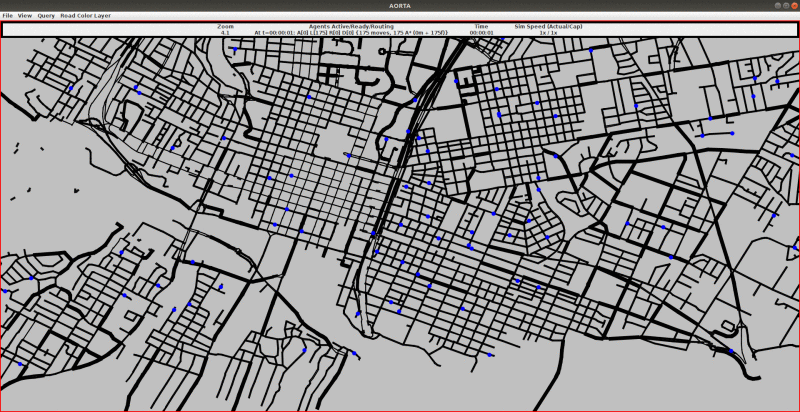Backstory
I originally wanted to tell a much longer story here of how I came to work on A/B Street, but I'm not sure this is the right time yet. So consider this the quick version.
I grew up in Baton Rouge, where driving is effectively the only mode of transport. (I've gone back and made a point of taking long walks to confirm how antagonistically the city is designed towards walking.) Very early on, I fell in love with a Nintendo 64 game called Banjo Kazooie, which led me to the online fan communities of the early 2000's. I wanted to create games too, so I started learning programming via library books and lots of questions on IRC. Because I never had any confidence in art, I wound up working on roguelikes, which led to a fervent interest in pathfinding algorithms and collaborative diffusion. When I started driving in high school, I quickly realized how bad people were at it. I remember being stuck at the intersection of Florida Blvd and Cloud and first wondering if the pathfinding algorithms could help with traffic. Can you see where this is going?

I moved to Austin for college. One of the first days of class, I shuffled down the stairs of Gearing Hall past a crackly old speaker apocalyptically announcing the weather forecast (details add color, right?) into a seminar demanding a totally open-ended first assignment to do something interesting. After I left, somebody stopped to ask me for directions, but I didn't know campus well yet. I thought about how Google Maps gave really silly walking directions. So I decided I'd hand-draw a map of campus, showing all of the construction, how to cut through the labryinth that is Welch Hall on hot days, and where to find the 24/7 robot coffee machines, and hack together a routing engine to help people find the shortest path between their classes. The feedback I got on this assignment included something along the lines of, "I was really pretty impressed first that you would be so stupid as to actually try to do this..."

But I did, and that led me to discovering OpenStreetMap, which it turns out was pretty pivotal. (The first version of my campus map was seeded vaguely off an official paper map, but mostly I walked around and invented half-assed surveying methods on the spot.) Next semester, I joined a freshman research stream with somebody who had worked on AIM, UT's demonstration that autonomous vehicles wouldn't need traffic lights. Everything came together, and I started a 3 year journey of building AORTA, a traffic simulator for AVs. Guided by the research lab, I explored the really bizarre idea of letting AVs bid to turn lights green sooner and micro-tolling all roads to disincentivize congestion. Both of these mechanisms would be incredibly unfair to people without the spare cash to back up their high value-of-time, but I brushed this off by saying the currency could be based on carpooling, EVs, etc.

It was great to try research in college; I learned I really dislike munging data and compressing my work into 6 pages of conference paper LaTeX. So I moved to Seattle to work in industry instead, on something completely unrelated to transportation. Lots of things began unravelling for me in Seattle, but one of them was biking. In Austin, I had picked up mountain biking, and all but stopped driving; it was an amazing place to explore and commute by bike. Seattle was different. There were many more cyclists around, but the experience felt more stressful, the drivers more aggressive. I had plenty of near-misses. I kept commuting by bike, but the joy of it was gone. I started noticing how many cars were parked on narrow arterials and wondering why that was a fair use of space. I started paying attention to the public discourse around bike infrastructure in Seattle and feeling like the conversation was... chaotic.

Fast forward to late 2017. This is where I'll omit chunks of the story. I visited London, my first experience with a city that took public transit seriously. When I returned, lots of latent ideas stopped fermenting and started exploding. I threw together a prototype of A/B Street and started the arduous process at work of open-sourcing it and applying to a program to let me work it on for a few quarters. A few months later, I wound up quitting instead, and began to work on A/B Street in earnest.